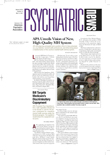The topic of patient safety should be integrated into resident education in a comprehensive manner, recommends a new report from the Association of American Medical Colleges (AAMC). The report is a product of a joint committee consisting of members of the AAMC’s Group on Resident Affairs and Organization of Resident Representatives.
Several studies in the last decade or so have identified risks to patient safety in resident education. A survey published in the January 2, 1991, Journal of the American Medical Association showed that most residents reported more than one cause for their mistake, with 51 percent reporting they had too many tasks and 41 percent reporting fatigue.
An article in the February 27
New England Journal of Medicine identified several risks to patient safety experienced by residents, including sleep deprivation, a culture that inhibits frank discussion of medical errors, difficulty in locating medical charts and equipment, unstructured training in performing procedures, and ordering and medical systems unaided by computerized assistance (see
story below).
The Accreditation Council on Graduate Medical Education (ACGME) addressed resident fatigue in new requirements for teaching hospitals that become effective in July. Residents cannot work more than 80 hours in one week, including moonlighting, and cannot participate in hospital shifts over 24 continuous hours.
The report commends the ACGME for establishing limits on resident hours as one step toward improving patient safety and advocates that the ACGME integrate patient-safety activities into the ACGME’s six core competencies for residents.
Recommendations
Among the recommended patient-safety activities for residents are the following:
• Participating in a curriculum addressing human error and error prevention as applied to medicine, the mastery of which can be evaluated through written and oral exams.
• Participation in analysis of root causes and the review and revision of the chain of events that led to errors and “near misses” as opportunities to improve patient care.
• Implementation of specific lectures, simulations, and faculty role modeling emphasizing effective communication with patients and their families regarding disclosure of adverse patient outcomes.
• Mastery of a specific curriculum on the ethics of disclosing adverse outcomes to patients as demonstrated through written and oral exam performance.
• Participation in institutional quality-assurance committees in which residents’ input can provide a unique perspective in committee deliberations.
Shifting Culture
A major challenge to improving patient safety is changing the culture of medicine, which has long maintained that physicians are infallible and mistakes are rare, said the co-chairs of the AAMC joint committee report in interviews with Psychiatric News.
“The physician culture tends to attribute adverse patient outcomes to a few bad apples rather than a problem within the patient-care process,” said John Russell, M.D., co-chair of the joint committee report.
A more effective approach to improving patient safety is to assume that mistakes occur in complex multidisciplinary systems such as hospitals. In teaching hospitals, medical students and residents add another layer of complexity, said Russell, the senior vice president for medical affairs at New Britain General Hospital in New Britain, Conn.
“Teaching hospitals must balance supervision and resident competency with delegating greater patient-care responsibilities to residents,” said Russell.
The report urges teaching hospitals to address medical errors openly and view them as educational opportunities. “Residents are on the frontlines of patient care and should be included in analyses of causes of medical errors because [residents can] offer an important perspective. In addition, residents benefit from the error-analysis process because they realize that they, more often than not, were one link in a chain of events that led to the adverse outcome,” said Russell.
The report also encourages teaching hospitals to create a climate in which medical errors can be disclosed fully. David Sklar, M.D., the other co-chair of the AAMC joint committee, said, “Residents should feel free to report medical mistakes to their supervisors without fear of retribution. They should also be encouraged to explain what happened to affected patients and any corrective procedures.”
Sklar is chair of the emergency medicine department at the University of New Mexico School of Medicine in Albuquerque.
Because error analysis and systems change are emotionally charged and often demoralizing processes, emotional support and counseling services should be made available to residents and other house staff who commit medical errors, recommends the report.
The “AAMC Report on Patient Safety and GME” is posted on the Web at www.aamc.org/publications/patientsafetygme.htm. ▪
